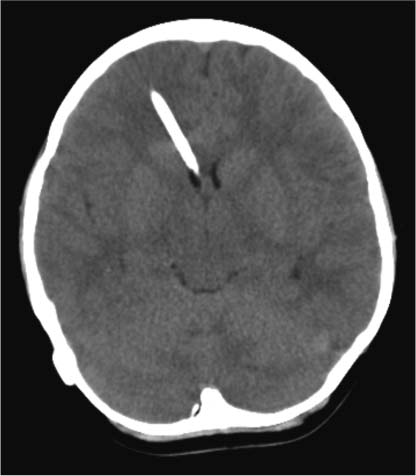I. Mechanics of hydrocephalus and headaches

The combination of brain volume (volume for the average adult is 1,260 cubic centimeters), blood volume, and cerebrospinal fluid (CSF) volume determine intracranial pressure or ICP. If one of these increases, pressure in the brain will rise unless one of the others compensates by decreasing. In a person - such as myself - with hydrocephalus this balance is distorted and a unnatural condition takes place. In a person not affected by hydrocephalus, they should have one ounce (1 oz.) of CSF in the ventricles and about four ounces (4 oz.) of CSF surrounding the outside of the brain. When the components of the brain are functioning normally - without a shunt - the brain has the ability to be elastic. This means it is able to compensate accordingly for an increase (or decrease in CSF pressure). In hydrocephalus patient's who have been shunted, this is no longer the case.
 |
| Physiology of hydrocephalus |
Placement of a shunt results in an unnatural situation. The brain fills the intracranial space while the shunt drains essentially of the available CSF from the ventricles.The end result is a larger-than-normal brain in a fixed (NOT elastic) skull with little room for changes in the ICP (which is characteristic of a person with hydrocephalus. If changes in blood flow occur, resulting in blood volume within the intracranial space, increased intracranial pressure will occur and can result in a headache.
Headaches can also be the result of altered pressures within the skull once a shunt has been implanted. Interestingly, the can occur both if the pressure is too high or too low.
II. Treatment
Like everyone else, both children and adults with hydrocephalus experience periodic headaches. It is the frequency and severity of these that determine whether they are a result of the hydrocephalus. According to Dr. Gordon McComb, Chief of Neurosurgery, Children's Hospital Los Angeles, "If the headaches are getting progressively worse, many times it's an intermittent malfunction of the shunt". Dr. McComb explains that ventricle size is also not always an accurate indication of whether the shunt is working correctly. "The ventricles are going to remain the exact same size whether the pressure is normal or elevated".
 |
| The slit ventricle is the white streak visible pointing toward the left side of the brain |
When hydrocephalus problems experience repeated headaches it is imperative to sketch out a plan of action which involves a conference between the patient and his/her doctor(s). This conference sets up treatment parameters and, if those parameters are exceeded, the medical team moves forward with the replacement of the shunt.
For additional information: Hydrocephalus and headaches


No comments:
Post a Comment